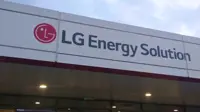Tata Power to sell non-energy ventures, cut Rs48,816-cr debt
24 Aug 2017
Tata Power has decided to sell some of its non-energy business and review non-core investments to pare down its Rs48,816 crore debt, chairman N Chandrasekaran said at the company's 98th annual general meeting.
Meanwhile, the company will continue to explore options to resolve issues pertaining to the financially crippled 4,000-MW Coastal Gujarat Power at Mundra.
''Our gross debt is Rs48,816 crore. We are examining various debt reduction options including sale of non-core assets," Chandrasekaran told shareholders in Mumbai.
Tata Power's business in defence was set up in the 1970s and has a turnover of Rs548 crore. The unit may be separated from the company in the revamp initiative under Chandrasekaran (See: Tata Power may hive off defence-related SED arm).
Other non-energy investments include Tata Projects, Tata Teleservices, Tata Communications, security solutions provider Nelco (the first Tata company where Ratan Tata became a director) software company Nelito Systems and Tata Ceramics.
"We are trying to get all the non-core assets from the company to reduce our debt," said Chandrasekaran in a response to a query on corporate strategy by long-time shareholder Adil Irani. Tata Power's debt to equity ratio stands at 3.3: 1.
Tata Power's non-energy investments have long existed as traditionally various Tata Group entities support the conglomerate's business ventures. As a result, the group has a cross-holding structure in almost all of its businesses. Chandrasekaran at the meeting said that "We are working to remove the cross-holdings".
He said the gross debt to equity ratio currently stands at 3.3:1, he added.
Chandrasekaran said the steep rise in global coal prices impacted the Gujarat plant and Tata Power is working on some resolution for solving the problems.
The Tata Power group has an operating capacity of 10,463 MW, 98 per cent of which is tied up to long term power purchase agreements (PPAs).
Its clean energy portfolio is 3,141 MW, or 30 per cent of the total capacity, which the company plans to increase it to 40-45 per cent by 2022.
On the international front, the Zambian, South African and Georgian joint ventures have started commercial operations, totalling 530 MW.






















